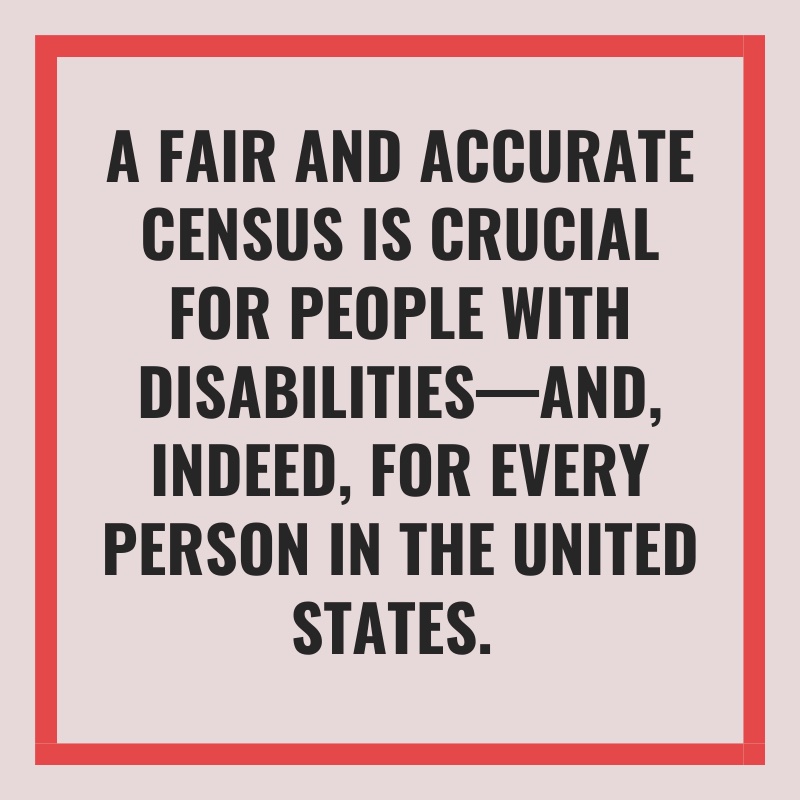 The 2020 Census is fast approaching! This year’s census will serve as America’s 24th decennial census and its results will impact everyone living in the United States for the next 10 years.
The 2020 Census is fast approaching! This year’s census will serve as America’s 24th decennial census and its results will impact everyone living in the United States for the next 10 years.
Did you know that funding for federal programs like IDEA, Formula Grants, and Vocational Rehabilitation State Grants, are divided among communities based on the information collected in the census? This is why it is so important to make sure that people with disabilities participate in the census. Find out what other programs will be impacted by Census 2020 data.
The census is a once-a-decade chance to ensure that our communities and families get the resources and funding we need to grow and thrive. Learn more about the 2020 Census.
By Census Day on April 1, 2020, households will have received an invitation to participate in the 2020 Census. Households will then be able to respond to the census: online, by mail, or by phone.
The US Census Bureau will ask 1 person from every U.S. household to complete the 2020 Census form on behalf of everyone in their household. Person 1 will then answer the following questions for every member of their household: Name, Relationship to Person 1, Sex, Age, Date of birth, Hispanic origin and race.
Accessibility
The US Census Bureau will have an American Sign Language video guide available to help guide people completing the 2020 Census.
The online self-response method for the 2020 Census must be fully accessible to people with disabilities. Section 508 of the Rehabilitation Act of 1973 requires all federal agencies, including the US Census Bureau, to make their electronic and information technology accessible to everyone, including people with disabilities.
Households will have the option to self-respond by phone during the 2020 Census. The US Census Bureau will utilize Telephone Device for the Deaf (TDD) technology to ensure that the phone self-response option be fully accessible during next year’s census operations.
